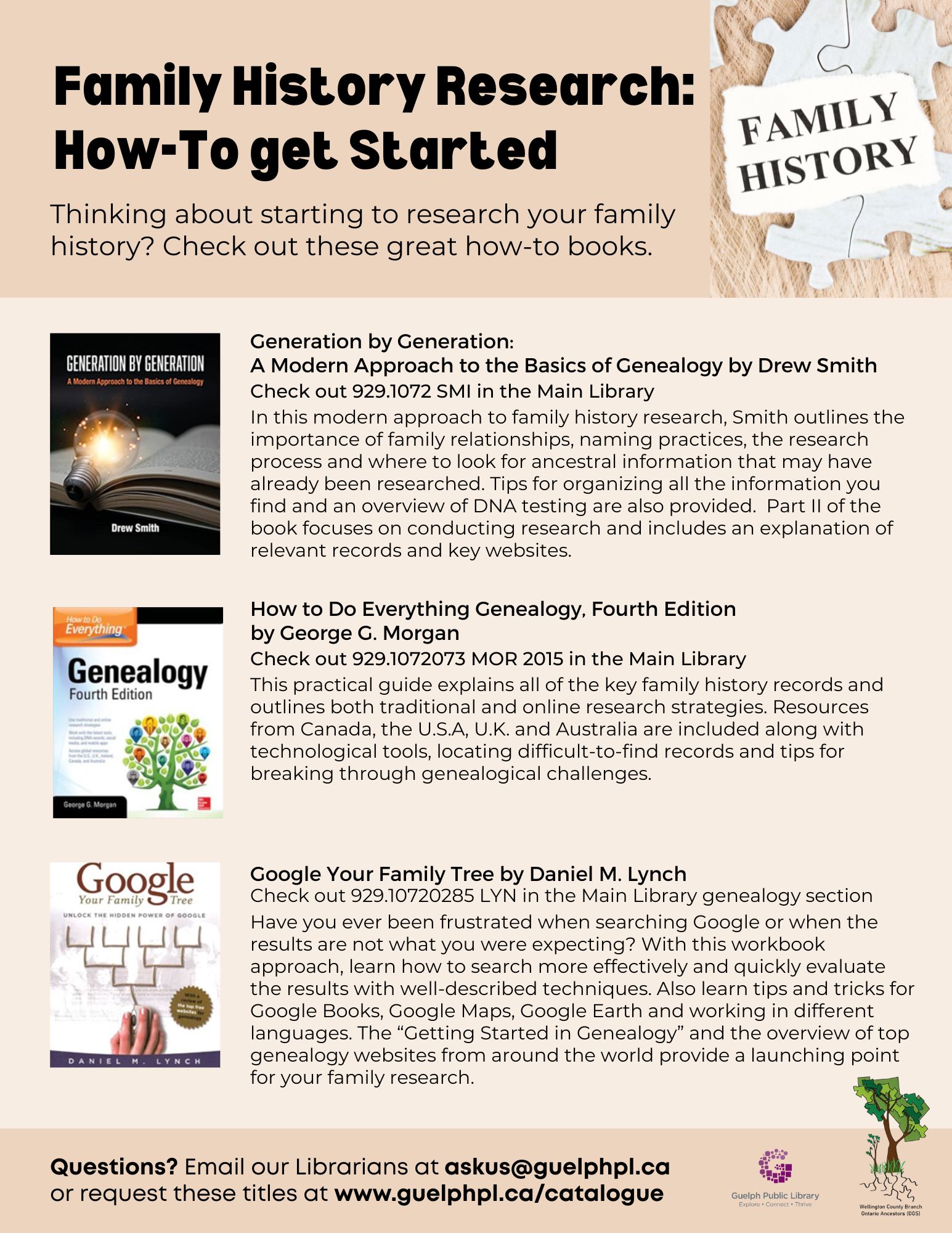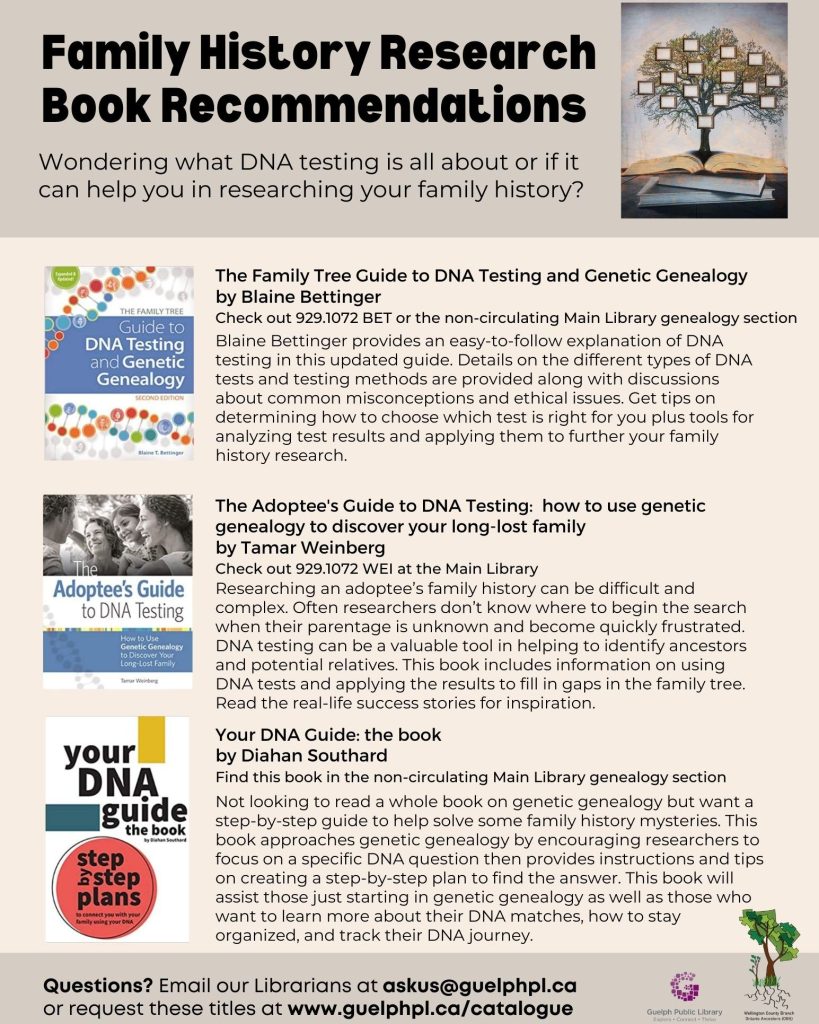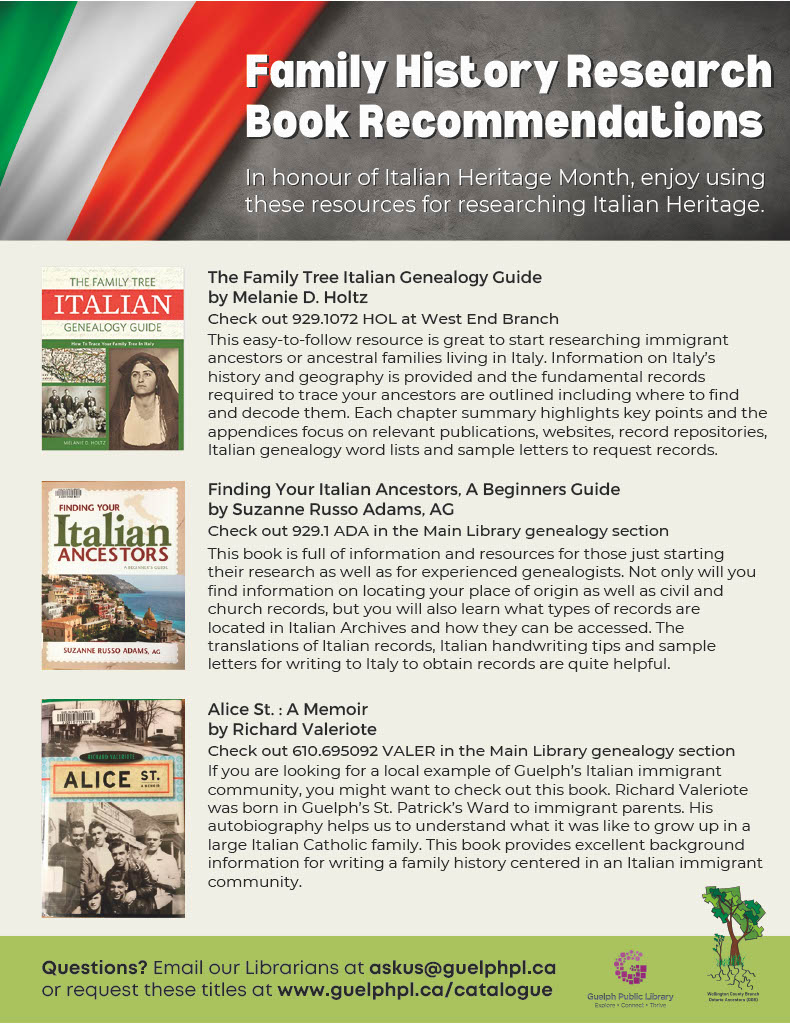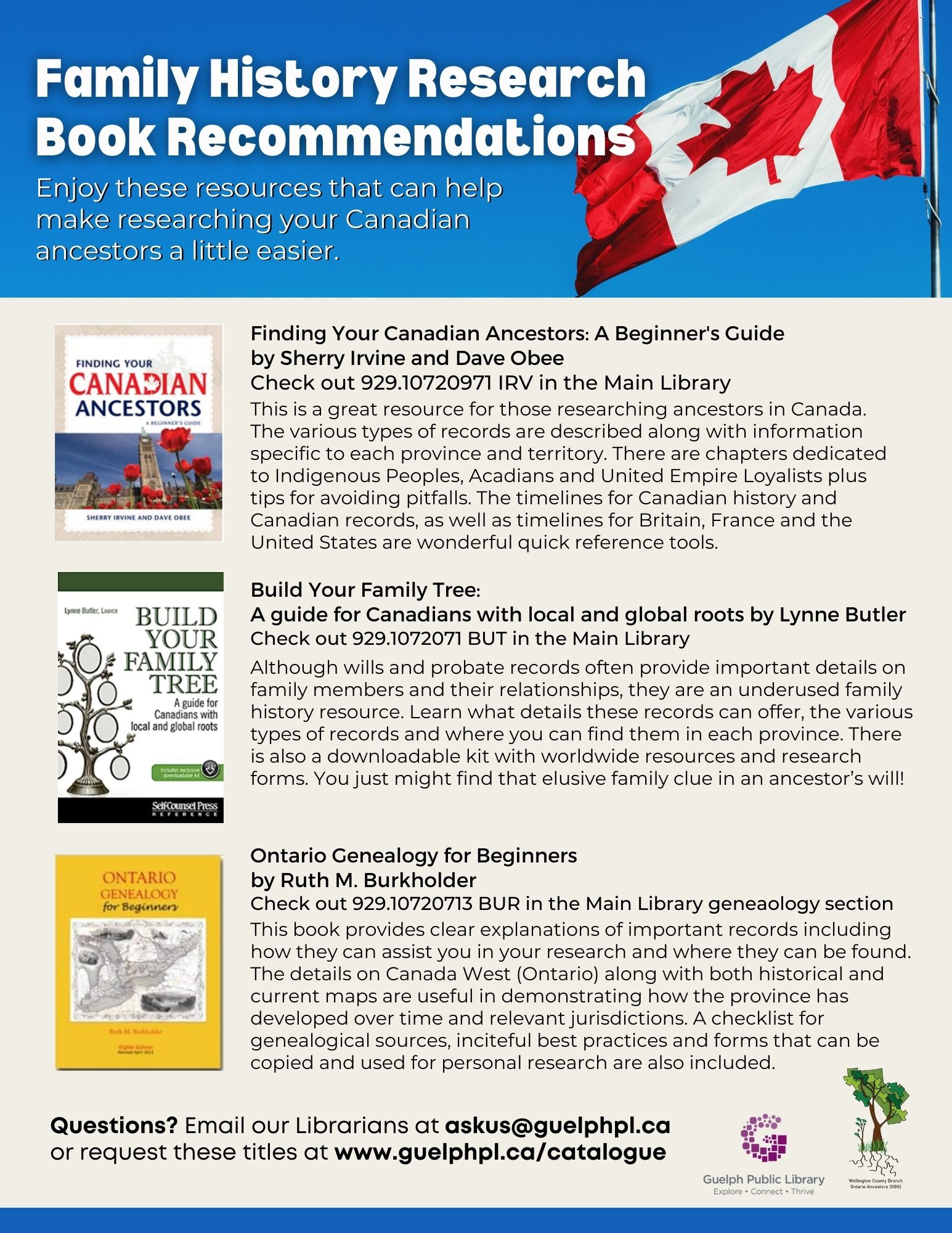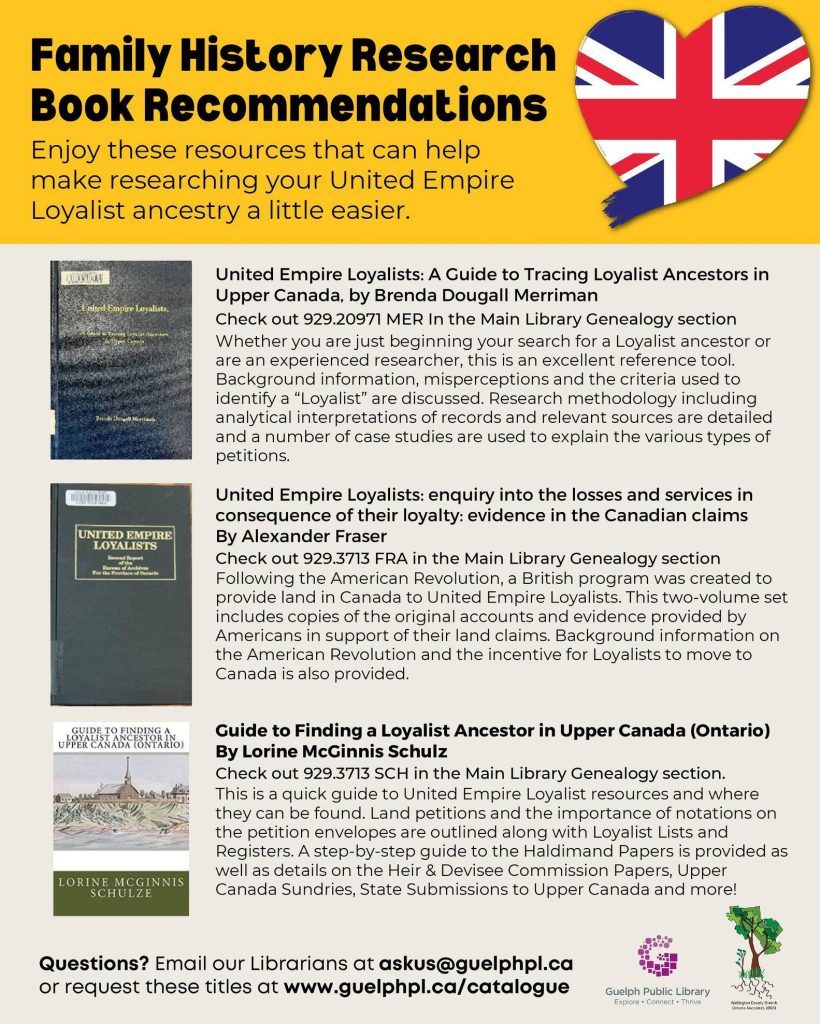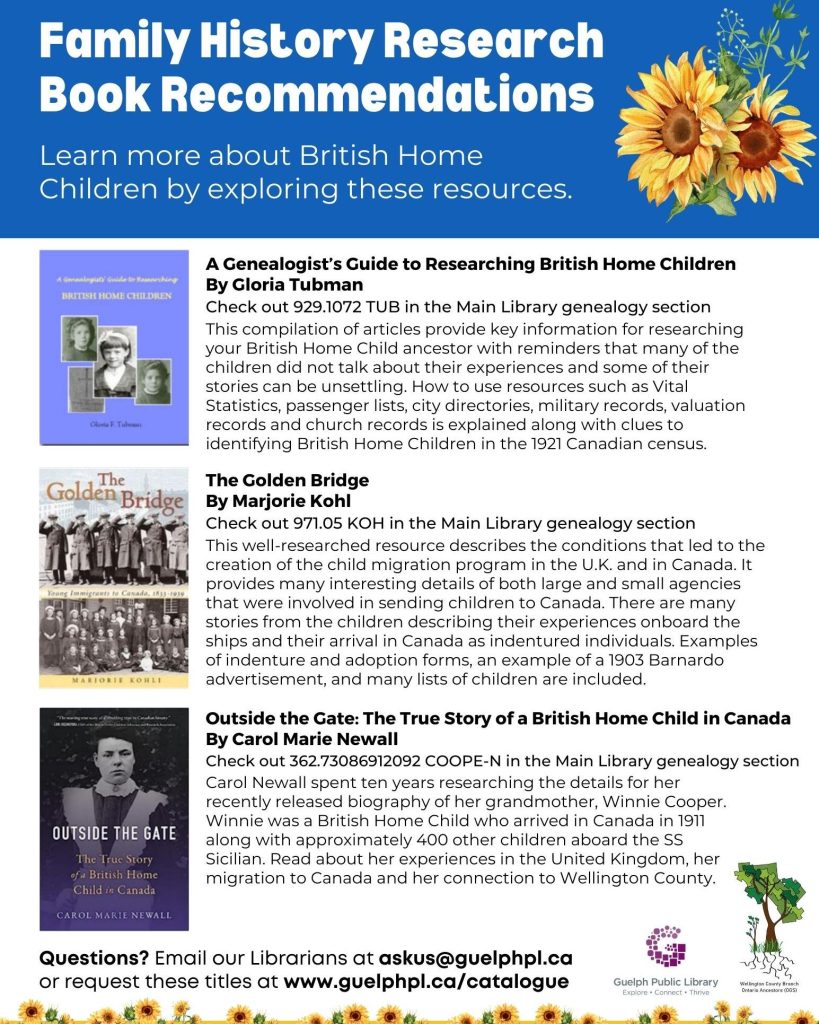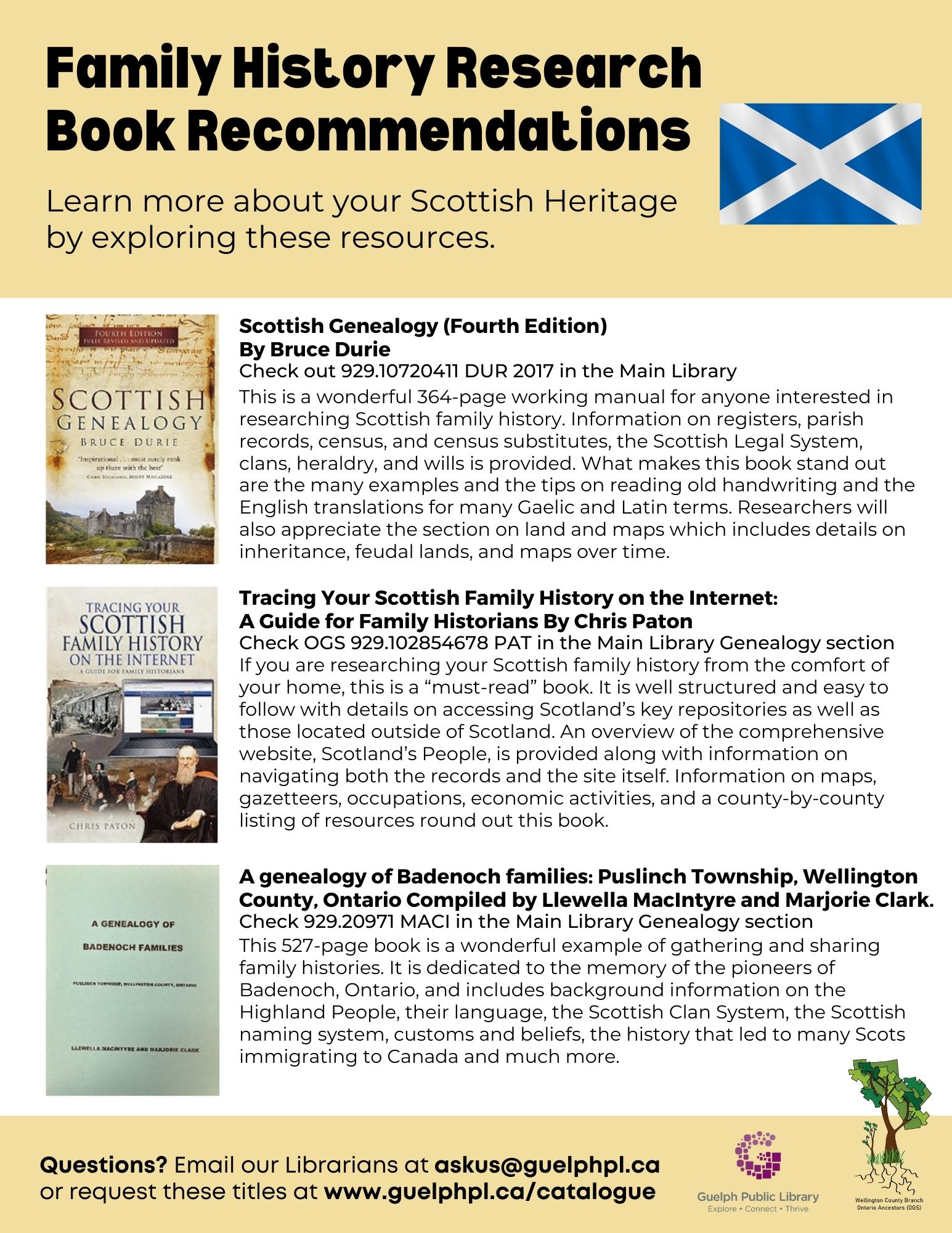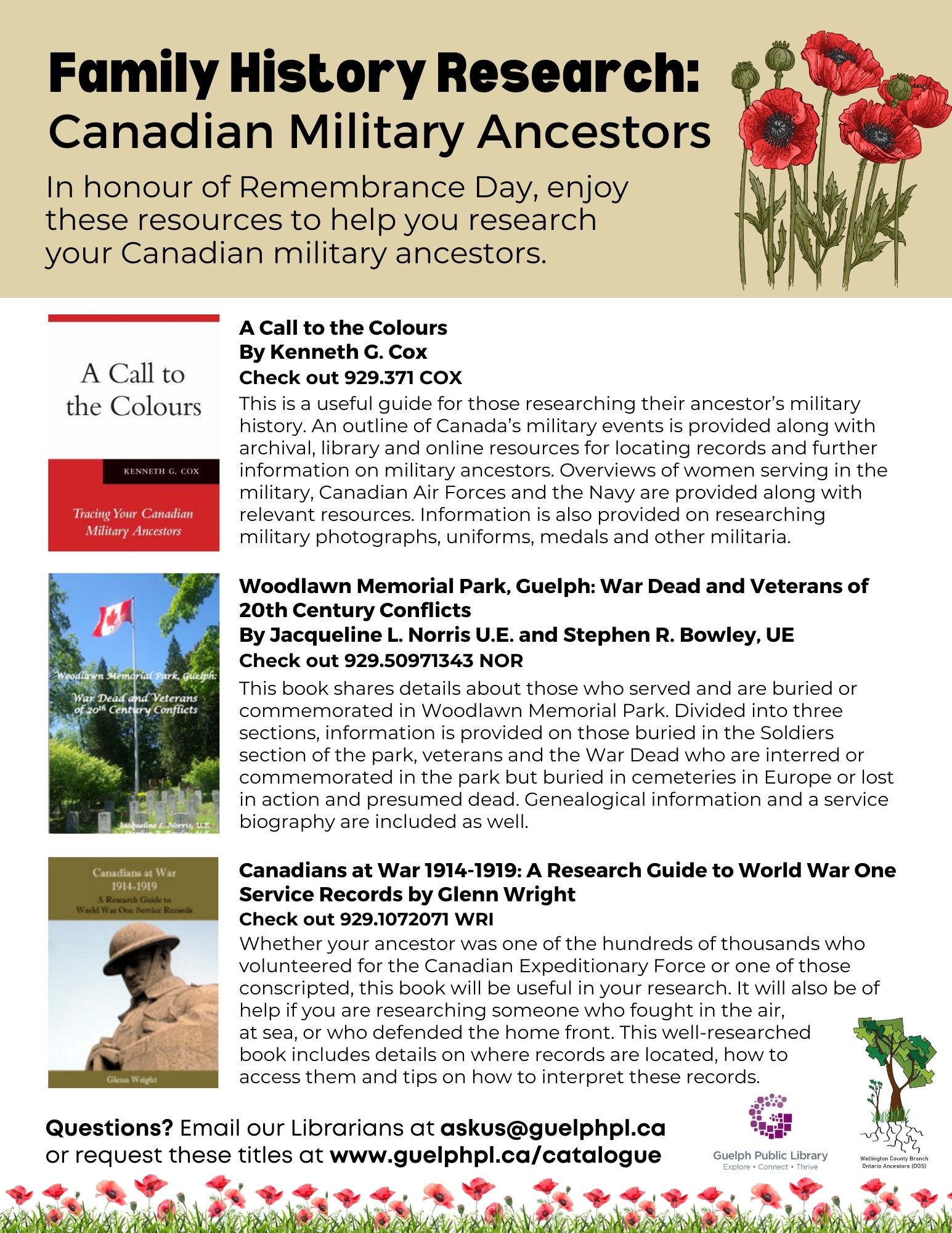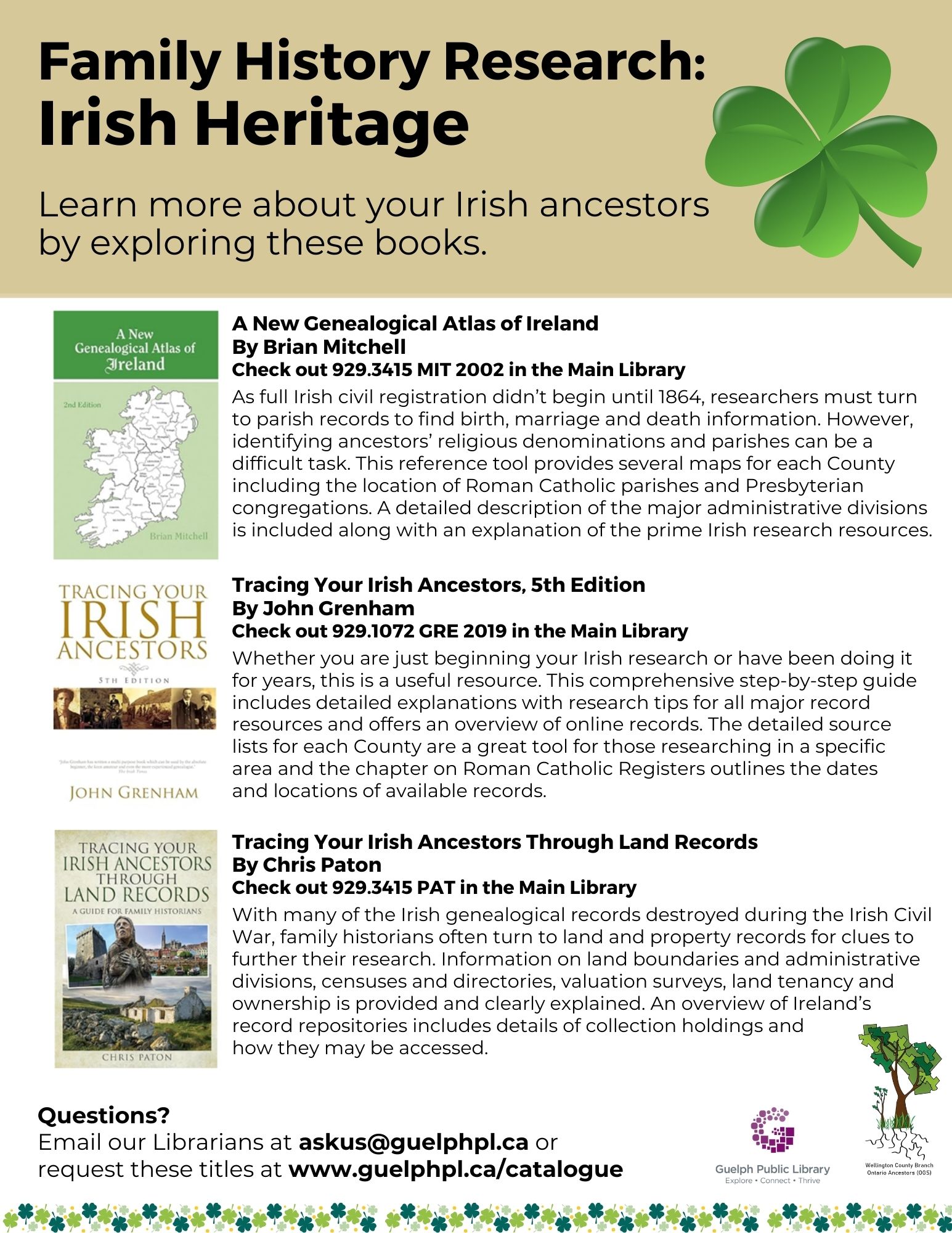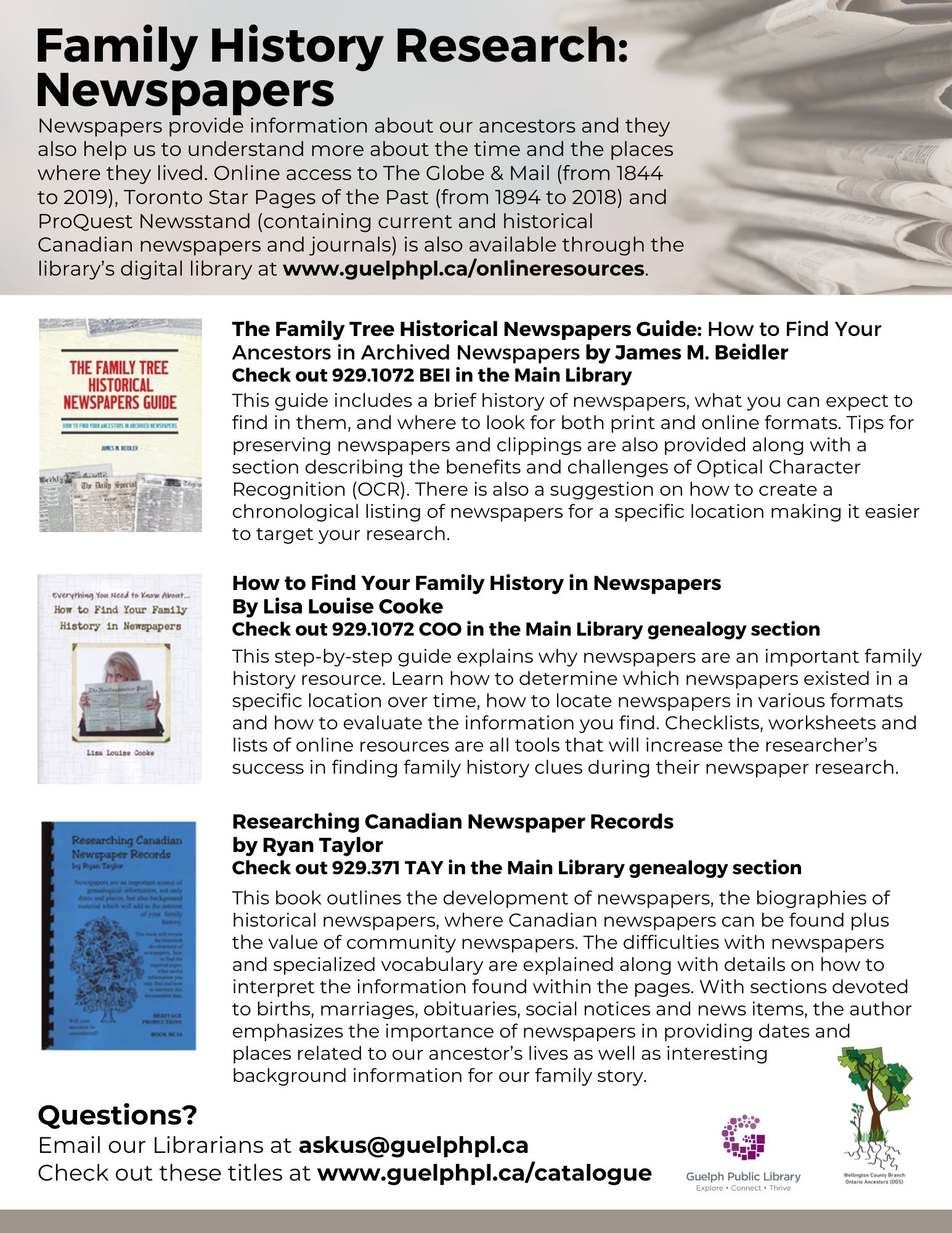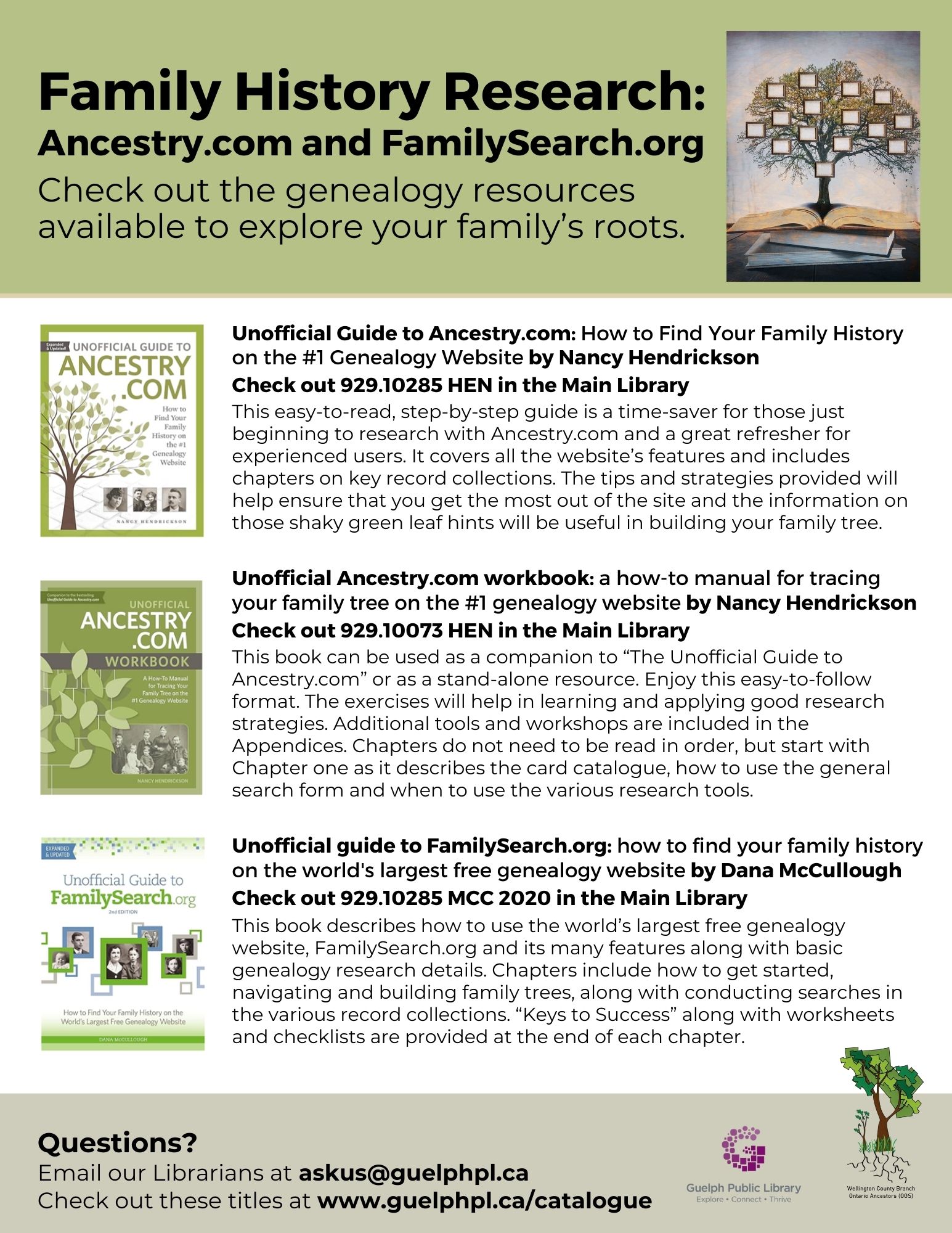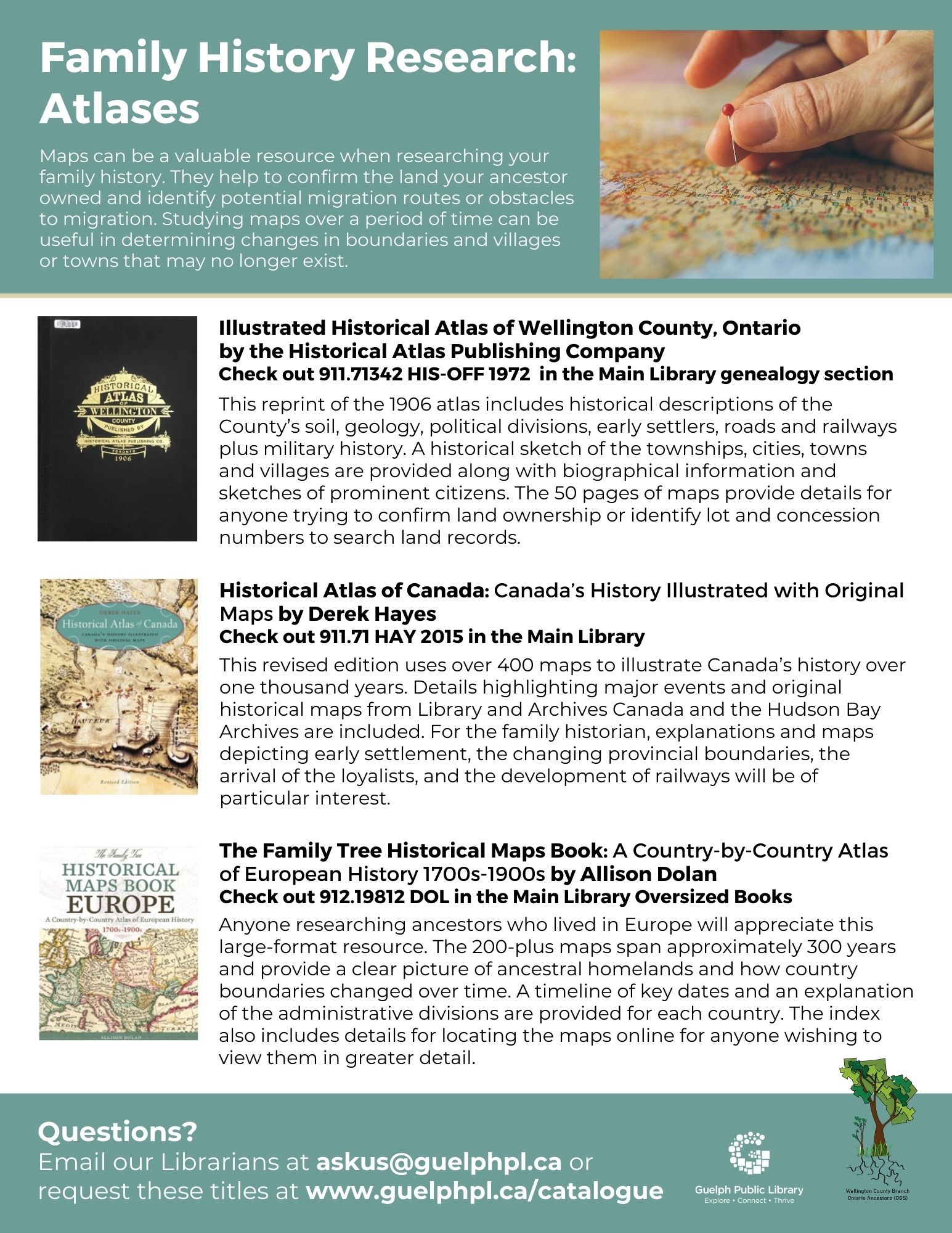Below are a list of books, organized by topic, to help you with your family history research! All of these publications are available through the Guelph Public Library (various branches), and some are part of the Wellington County Branch Family History Collection. If you do not reside in Wellington County, check out your local public library.
Book Topics:
- Getting Started in Family History
- DNA
- Italian Heritage
- Canadian Heritage
- United Empire Loyalists
- British Home Children
- Scottish Heritage
- Canadian Military Ancestors
- Irish Heritage
- Ancestry.com
- Newspapers
- Atlases
- German Heritage
